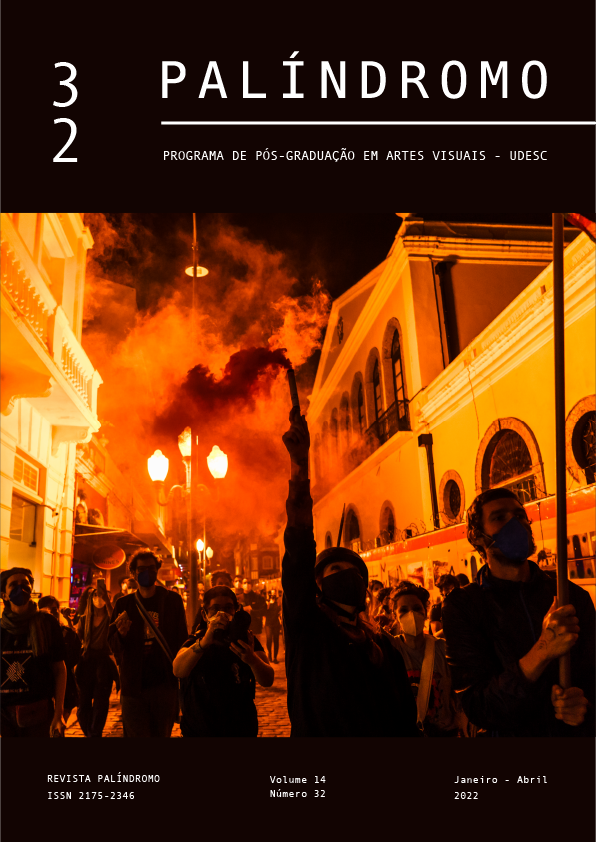Training processes of the art teacher in the degree course in field education - languages
DOI:
https://doi.org/10.5965/2175234614322022204Keywords:
Art Teaching, Country Education, Languages, Polyvalence in Education, Praxis in EducationAbstract
The article presents an analysis of the formation of art teachers in the State of Espírito Santo. It starts from the question about the particularities that constitute the Licentiate Course in Rural Education - Languages, as a multidisciplinary proposal for teacher training. It aims to understand how the multidisciplinary training of the course offered by the Federal University of Espírito Santo is carried out. Data are produced from documentary research, interviews and observation. It bases the analysis on the Marxian-Lukacsian category of particularity. It investigates the changes in art teacher education practices mediated by emerging social demands and legal provisions governing teacher education in Brazil and the implications for the initial teacher education curriculum. Thus, the analysis was developed from the National Curriculum Guidelines for the Undergraduate Course in Visual Arts, and referring to Teacher Training for Basic Education and the legal guidelines for offering a multidisciplinary course for training teachers in the field. This study identifies important changes in the curricula and practices of art teacher education when focused on affirmative policies. The analysis allows us to see important advances in meeting the needs of peasant education, at the same time pointing to the limits of this proposal for initial training.
Downloads
References
BARBOSA, Ana Mae. Inquietações e mudanças no ensino da Arte. São Paulo: Cortez, 2001.
BARBOSA, Ana Mae. Redesenhando o desenho: educadores, política e história. São Paulo, Cortez, 2017.
BRASIL. Ministério da Educação. Conselho Nacional de Educação. Lei de Diretrizes e Bases. Brasília, 1996.
BRASIL. Secretaria de Educação Fundamental. Parâmetros Curriculares Nacionais: Arte. Brasília: MEC/SEF, 1997.
Brasília, 2006. Conselho Nacional de Educação. Conselho Pleno. Resolução CNE/CP nº 01/Art.3/2002.
CALDART, Roseli Salete. Pedagogia dos Movimentos Sem-terra: escola é mais do que escola. Petrópolis, RJ: Vozes, 2008.
DUSSEL, Enrique. Ética da libertação: na idade da globalização e da exclusão. Petrópolis: Vozes, 2002.
FICHTNER, Bernd; FOERSTE, Erineu; LIMA, Marcelo; SCHUTZ-FOERSTE, Gerda M. Cultura, dialética e hegemonia: pesquisas em educação. Vitória: EDUFES,2012.
FOERSTE, Erineu. Pedagogia da Terra: um estudo sobrea formação superior de professores do MST. ANPED, GT, Formação de professores 08, 2004. Disponível em: http://www.anped.org.br/reunioes/27/gt08/t084.pdf.
GRAMSCI, Antônio. Os intelectuais e a organização da cultura. Rio de Janeiro: Civilização Brasileira, 1977.
KOSIK, Karel. Dialética do concreto. 7ª. Ed. Rio de Janeiro: Paz e Terra, 1976.
LOWENFELD, Victor. e BRITTAIN, Wallon. Desenvolvimento da capacidade criadora. São Paulo: Mestre Jou, 1977.
LUKÁCS, Georg. As Bases Ontológicas do Pensamento e da Atividade do Homem. In: Temas de Ciências Humanas. São Paulo, n. 4, p. 1-18, 1978b.
LUKÁCS, Georg. Introdução a uma Estética Marxista: sobre a categoria da particularidade. Rio de Janeiro: Civilização Brasileira, 1978a.
PIMENTEL, Lucia Gouvêa. (org.) Som Gesto Forma e Cor: Dimensões da Arte e seu Ensino. Belo Horizonte: C/Arte, 1995.
SILVA, H.S.A.; ANJOS, M.P.; MOLINA, Mônica Castana; HAGE, S.A.M. Formação de professores do campo frente às “novas/velhas” políticas implementadas no Brasil: r-existência em debate. Dossiê: “Consequências do bolsonarismo sobre os direitos humanos, a educação superior e a produção científica no Brasil. Disponível em: http://www.reveduc.ufscar.br/index.php/reveduc/article/view/4562/1067. Acessado em 20 de setembro de 2021.
Downloads
Published
How to Cite
Issue
Section
License
Copyright (c) 2021 FERNANDA BARRETO CAMARGO, Gerda Schutz-Foerste

This work is licensed under a Creative Commons Attribution 4.0 International License.
COPYRIGHT STATEMENT
The articles published by the magazine are free to use, intended for academic and non-commercial applications. Copyright is all assigned to the magazine. The articles whose authors are identified represent the expression from the point of view of their authors and not the official position of Palíndromo Magazine. The author (s) commits to whenever they publish material referring to the article published in Palíndromo mention this publication as follows:
This article was originally published by Palíndromo magazine in its volume (place the volume), number (place the number) in the year of (place the year) and can be accessed at: http://www.revistas.udesc.br/index.php/palindromo


